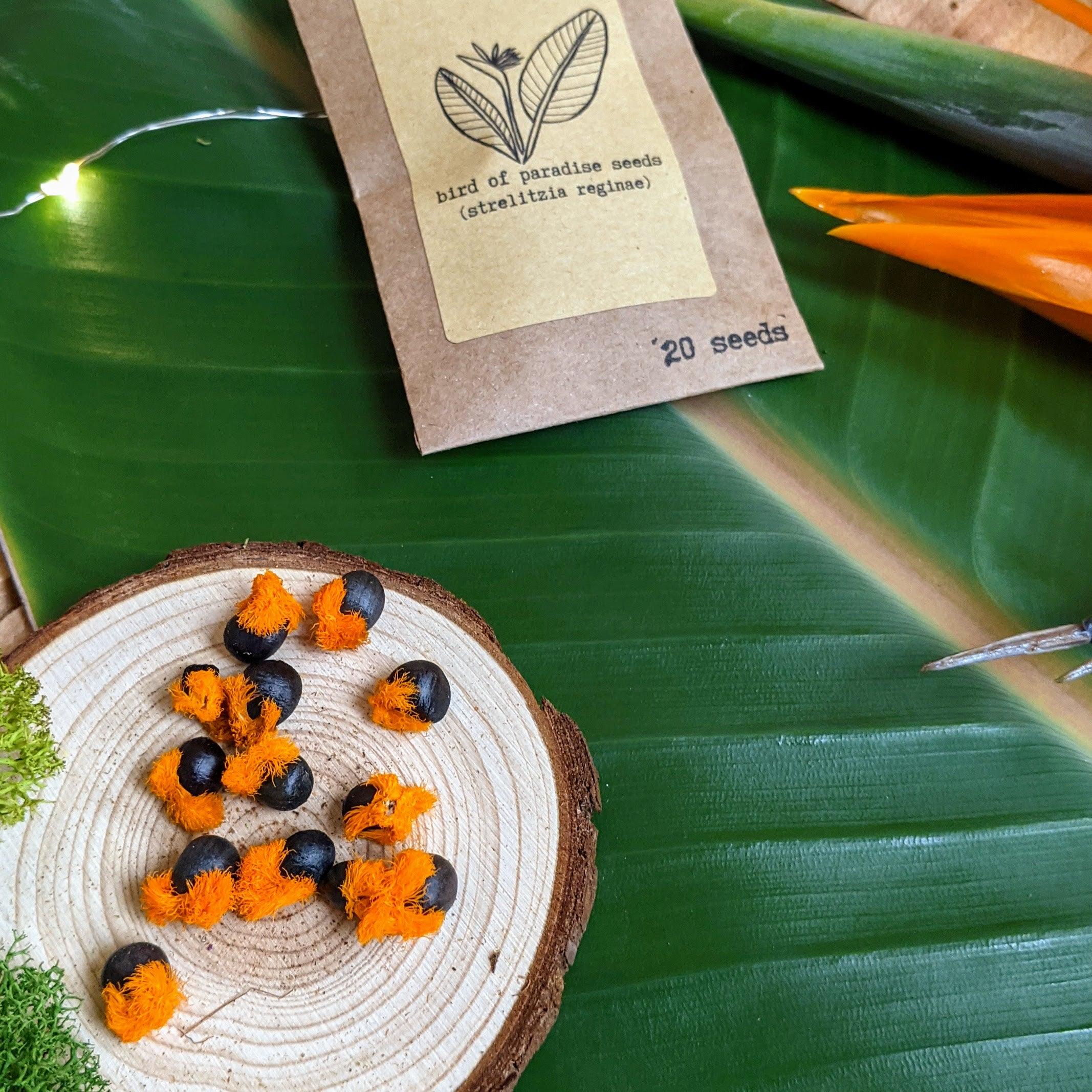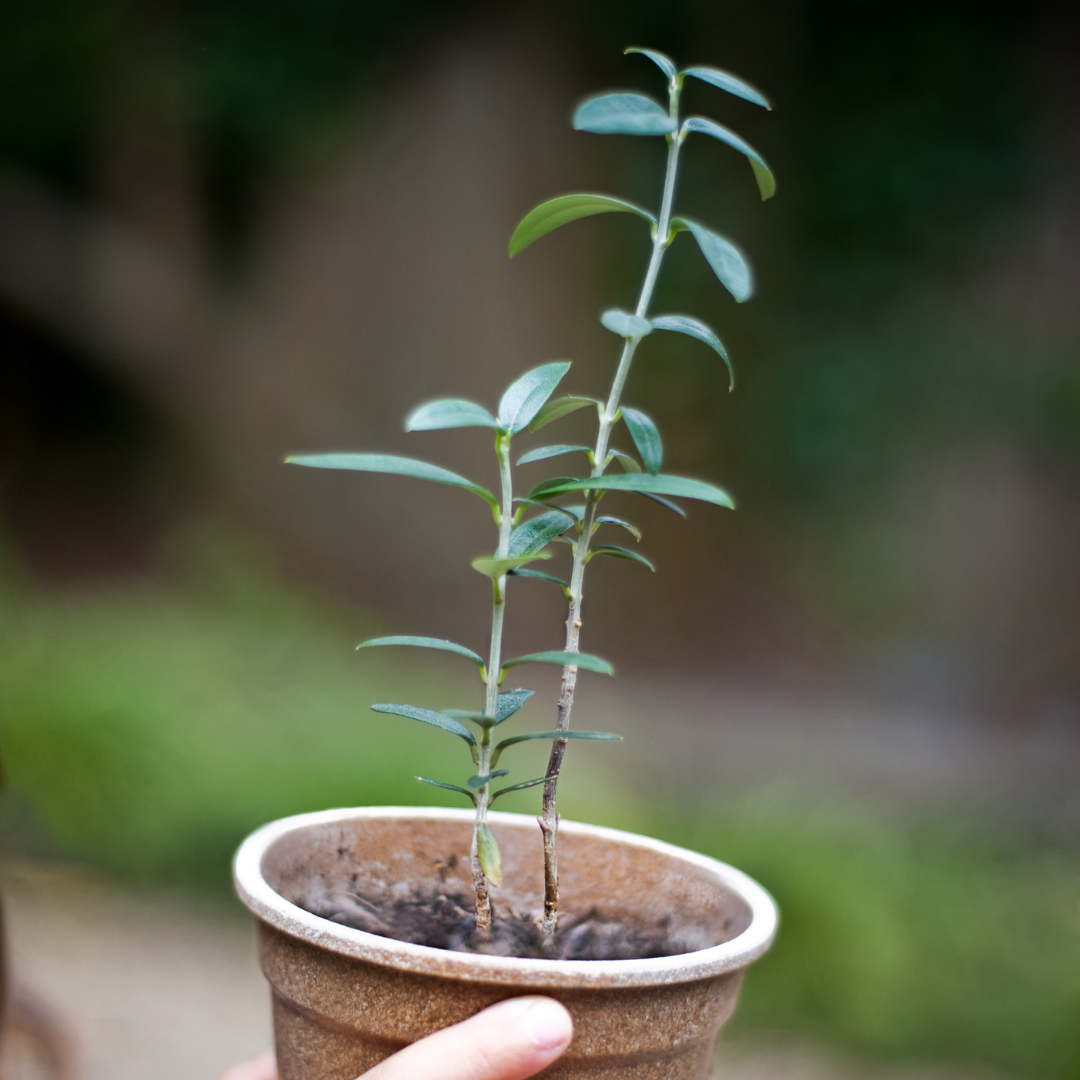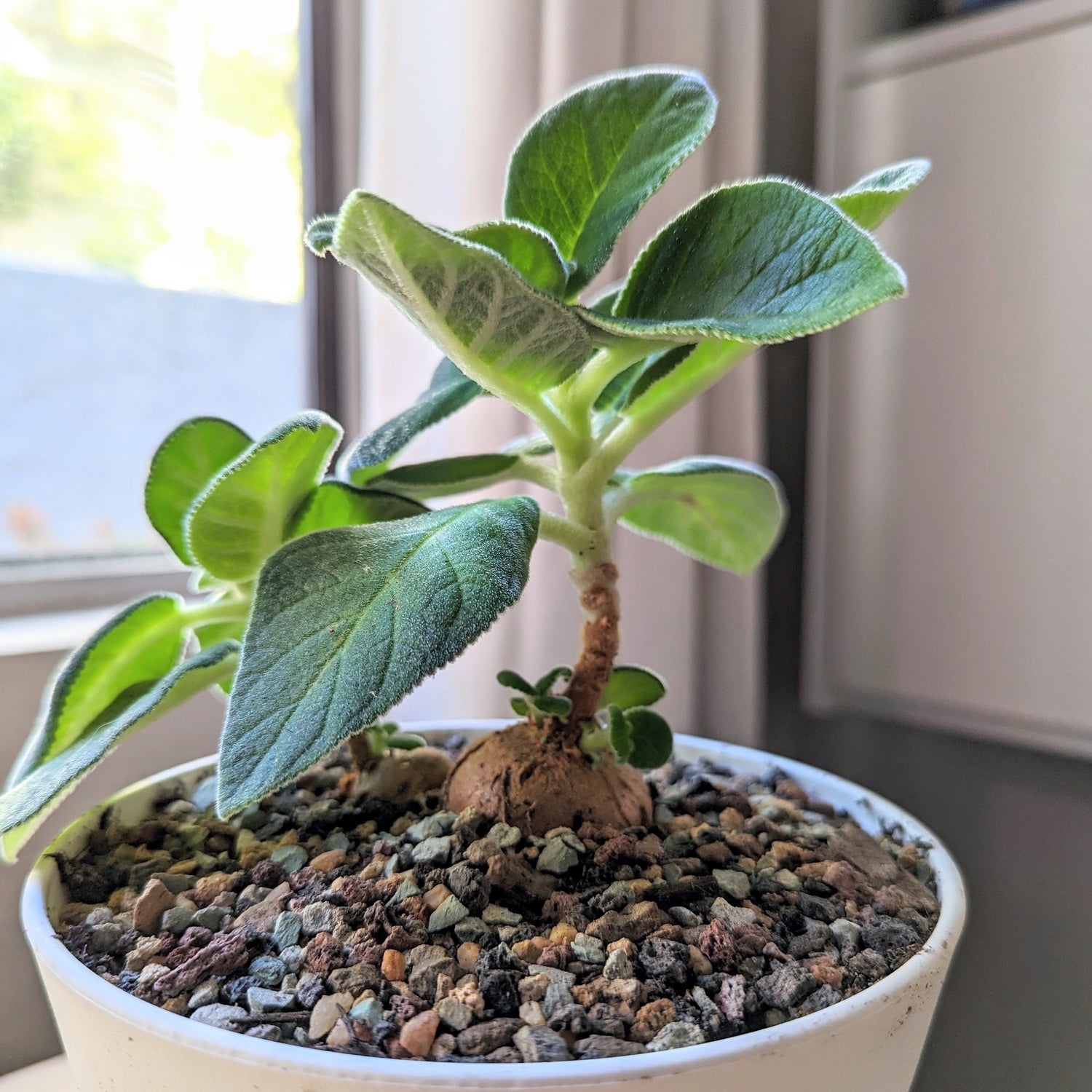Growing from seed can be a tricky hobby! Each seed is different and has different germination requirements, especially more exotic succulent seed, palm seed or houseplant seed varieties. In general, if you're just starting out we recommend starting out with the more beginner-friendly seed varieties(which you can find here). However, if you have some seed starting experience and would like a challenge, some of the more advanced varieties call for scarification!
Our new product pages and updated care sheets include whether or not your seeds could benefit from stratification or scarification, so if you’re not sure what that means, here is a post to break down scarification methods in particular(and we’ll have another about stratification!)

(the very unique-looking Bird of Paradise Seeds)
So to start, let’s clarify what scarification means:
To scarify a seed’s coating means essentially to weaken the hard coating so that the seed can start imbibing water and thus trigger germination.
Scarification in nature:
You may have noticed some seeds have very hard outer coatings while others are softer. The really hard outer coating is usually present in seeds that have to lay dormant for some time so they can undergo extreme conditions(like overwintering) or travel without damaging the contents of the seed. For instance, coconuts can travel for years until they're finally in optimal conditions to sprout!
The natural processes for scarification can happen in a few different ways. For instance, if a seed travels down a stream or is tread upon, it'll rub against rocks and/or get crushed which is classified as mechanical scarification. Another common form of scarification is chemical scarification, where a seed will go through an animal’s digestive system, encountering harsh acids that'll work away on the outer coating of the seed, before it finally ends up in soil.
So, our objective is to replicate this natural process of distressing the seed coat!
How to scarify seeds:

1. Physically denting, cutting, or scratching the coat
2. Soaking
Perhaps the most common and something I recommend for just about all tropical seeds! This just means soaking the seeds for 12-24hours in water. This helps soften the outer coat and allows the seeds to start absorbing water to help trigger germination.
3. Temperature changes
This can imply a cold snap to imitate winter(we’ll cover this more in the upcoming stratification blog), or by dunking seeds into some boiling water and letting them sit in the water until it cools.
4. Chemicals
Not something we’d recommend for the regular hobbyist, but sometimes companies will use acids like sulfuric acid to soak the seeds and prepare them for germination. The only chemical I personally will occasionally use hydrogen peroxide(which is very very mildly acidic), more so to sanitize the seeds prior to planting, though it can help soften the outer coating as well.
So when do you use these methods and how do you know which one to use?
In the case of our seeds, if the care sheet specifies “scarification” and “soaking”, then you can use methods 1 or 2, or both!

Otherwise, you can usually find online which seeds need what kind of germination methods.
You can also oftentimes guess based on the seed's outer coat. Usually if the seeds are larger and have a hard coat, like in the case of the Dracaena Draco seeds(pictured above, and seedling to the right) then they can almost always benefit from pre-soaking, and some mechanical scarification would likely help as well.
That being said, I always preach the experimental approach to seed starting! Dividing your seeds into small sample groups and trying out different methods with different groups and just getting creative makes the hobby more fun and educational! So try the various approaches with various seeds and note what results you get(and send us your results! We'd love to see!!)
Some seeds that can benefit from scarification:
Here are some seeds we currently carry in our shop that benefit from scarification prior to planting:

5) Nasturtium
Hopefully you found this post helpful! If so, please comment below which methods you've used on which seeds and how it worked out for you.
Don't forget to check out some of these similar posts about seed germination:
- How to Grow Houseplants from Seed
- How to Grow Palms [and Cycads] from Seed
- Why your Seeds aren’t Germinating: Common Mistakes Made Growing Houseplants from Seed, and How to Fix Them





